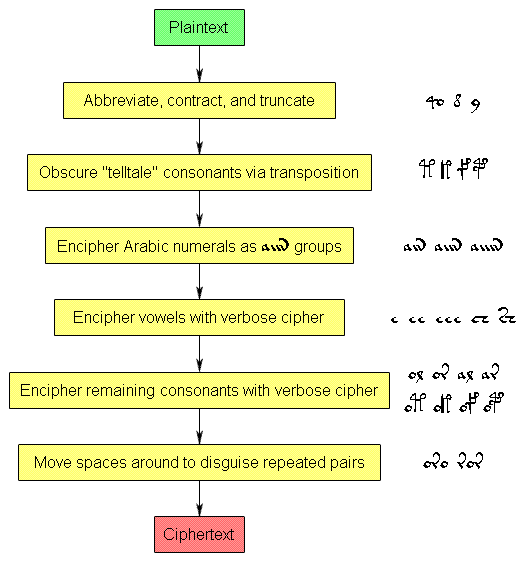A vast constellation of curious books revolves around the hazily uncertain core of the Voynich Manuscript: as with most things, some are outright good, some are just plain bad, while most live in a mixed-up zone in the middle.
Henry Carrington Bolton’s (1904) ” The Follies of Science at the Court of Rudolph II” is a poster-child for that mixed-up zone – equal parts fact and fiction, Bolton’s oeuvre contains more than a dash of both historical sense and hysterical nonsense. Though it does go on to cover many varied aspects of Rudolph’s court, the first half of it amounts to a greatest-hits compilation of the credulous alchemical mythology surrounding John Dee’s Bohemian adventure – “Now That’s What I Call Bohemian Alchemy #1“, if you like. 🙂
However, for all the hallucinogenic tableaux he conjures up via the shewstone of his historical imagination (and for all the brazen liberties he takes with the facts), Bolton clearly did go to a great deal of trouble to fabricate his Ikea mansion out a lot of, well, basically good stuff. Hence the reader (though often deeply suspicious) finds hundreds of genuine factual nuggets embedded into the walls of the proto-scientific passageway Bolton has tunnelled through the Rudolfine era.
So, my question to you is this: is the following particularly shiny nugget (pp.37-38) gold or lead?
[...] when conversation was interrupted by the entrance of Martin de Rutzke, bringing with him a beautifully illuminated and rare manuscript rescued at the dispersal of the library of Wresowitz, who was reputed to have been a successful experimenter. The work was entitled "The True Path of Alchemy," and was written by Antonio of Florence in the year 1475; being couched in exceedingly obscure and mystical language, hinting only at the secrets of the black art, it was particularly admired by Rudolph who ordered his treasurer to pay the high price demanded for it, and instructed his librarian to add it to his valuable collection.
For a start, this “beautifully illuminated and rare manuscript… couched in exceedingly obscure and mystical language, hinting only at the secrets of the black art” bought by Rudolph for a “high price” does sounds terrifically like the Voynich Manuscript as described by Dr Raphael Mnishovsky (according to Johannes Marcus Marci in 1665).
Furthermore, even if I just happened to have a time machine in my shed I could barely have engineered a more blatant archival link between Rudolph II and a mid-Quattrocento Florentine called “Antonio”. (Note that Antonio Averlino is reported by Giorgio Vasari to have died in Rome around 1469, but given that there is no documentation to support or refute this, 1475 is entirely possible.)
As far as the book’s 16th century provenance goes, Wolfgang von Wresowitz died on 21st March 1569, while Bernhard Wresowitz died in 1571, and presumably the alchemical “library of Wresowitz” Bolton mentions was dispersed not long after: Rudolph moved his court to Prague in 1583, but it would probably take someone like Rafal Prinke to trace the Wresowitz alchemical library connection any further.
All in all, the big research question then becomes: did Bolton just make up this whole thing (the document name, author name, date, price, and provenance), or was he reporting something he found while trawling relevant books for intriguing-sounding alchemical stories? He comments elsewhere that he made use of the books by Czech historian Josef Svatek (1835-1897), so perhaps that’s one place to start.
Normally, the first proper place one would look for this would be the 1607-1611 Kunstkammer inventory drawn up by miniaturist Daniel Fröschl, as described in detail in Rotraud Bauer and Herbert Haupt’s (1976), “Die Kunstkammer Rudolfs II“. Unfortunately, the relevant gifs have long disappeared from the voynich.nu Bauer-Haupt page, so doing this will probably require someone (i.e. probably me) to spend a day at the library. However, I should also caution that, because Rudolph II may well have presented the same book to Sinapius around 1608 when he gave him the “de Tepenecz” title (i.e. while Fröschl was drawing up the inventory), it is entirely possible that it may not appear there – so, absence of evidence there would (as ever) not be evidence of absence.
However, the problem with this is that Fröschl’s inventory was completely unknown to historians until the middle of the twentieth century, and hence was unknown to Bolton: so, whatever Bolton’s source for this story, the one place we can be sure it didn’t (directly) come from is that inventory.
But all the same: if not there, where on earth did Bolton happen to read about “The True Path of Alchemy“? If we could answer that question, we might well be able to find out about the Voynich Manuscript’s very early history… definitely worth a closer look, I’d say… 🙂
PS: quick reminder not to forget the London Voynich pub meet at 5pm tonight!
PPS: thanks to a high-speed reply from Rafal Prinke, it now looks as though this is not (after all) the Voynich Manuscript (which is a shame, but what do you expect if you rely on Bolton?) – and possibly closer to a chicken nugget than to a gold nugget. Even so, expect a further post on this shortly! 😮

